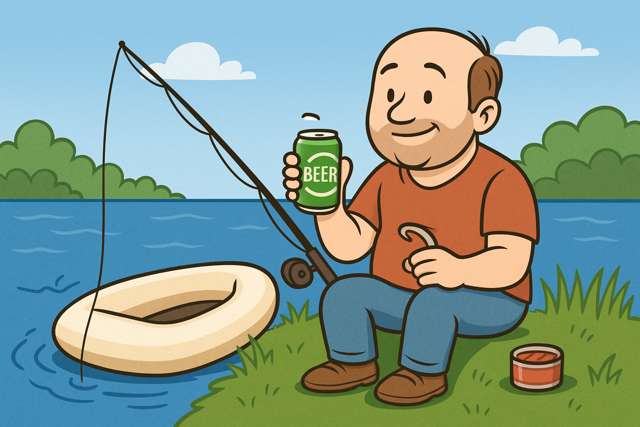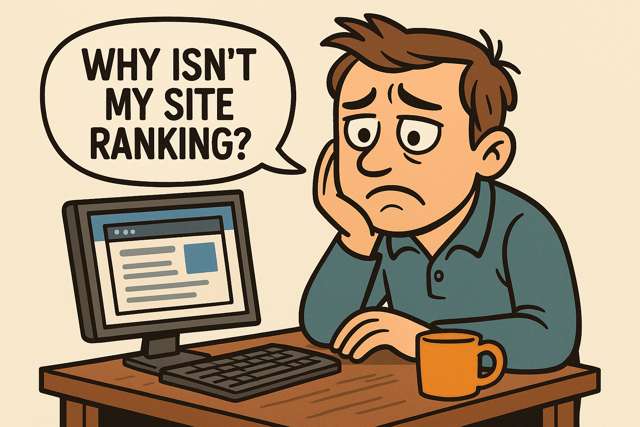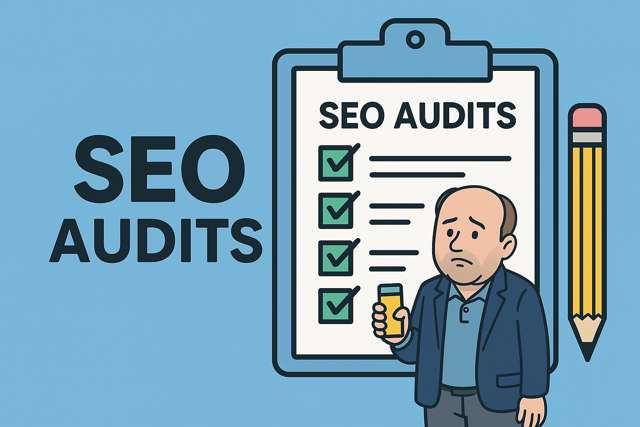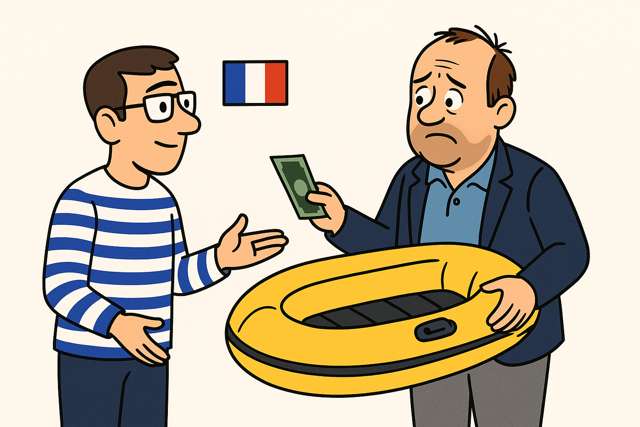What This Site Is (And Why I Bothered)
I built this site because I wanted a career that actually works — offering a straightforward SEO audits for small businesses. Something remote, flexible, and genuinely useful.
A way to earn money without commuting, office politics, or endless meetings that should’ve been an email.

Work I could do from anywhere — whether at home, on holiday, or sat by a lake fishing with a can of beer.
Something that made good, honest money — with just enough left over to blow a bit in the casino if I feel like it.
This site is that attempt. It’s about giving real SEO audit for small businesses — no fluff, no lies, just solid help that works.
Who This Site’s For (And Who It’s Not)
This isn’t built for giant agencies or brands with six-figure marketing budgets. They’ve already got full teams, strategies, and someone called Emma who manages “the digital.” They’ve got dashboards, consultants, and meetings about meetings. Good for them.
This site’s for the people running small, scrappy websites — tradespeople, shop owners, coaches, side-hustlers. The ones who built their site (or paid someone to) and now just want it to bloody work. You don’t need a 300-slide strategy deck — you need someone to tell you what’s broken and how to fix it without needing a developer, a thesaurus, or a pint of espresso.
It’s for people who want simple answers:
Why isn’t my site ranking?
What’s wrong with it?
How do I fix it without learning code or spending a fortune?
That’s who this is for.
If that’s not you — no hard feelings. But if it is, you’re in the right place.

Wait — What Even Is SEO?
SEO stands for Search Engine Optimisation — but ignore the fancy term.
It just means making your website easier to find on Google.
If someone types “plumber in Doncaster” and your site’s on page 6, congrats — no one’s ever seeing it.
SEO is about making sure Google understands your site, trusts it, and shows it above your competitors.
That means fixing technical stuff, improving your content, and sending the right signals — so the right people land on your site instead of someone else’s.
It’s things like page speed, clean code, mobile friendliness, and proper heading structure. It’s writing useful content that actually answers the searcher’s question — not just stuffing the same keyword 14 times and hoping for the best. It’s about showing Google: “Hey, I know what I’m doing — and here’s the proof.”
It’s also knowing what not to do. Like having your homepage title as “Home” or your blog post called “New Page.” Or using the same meta description for every page. Or uploading 4MB images that make your site load like it’s 1998 on dial-up.
No magic. No hacks. Just a solid, honest push up the search results — with no BS and no snake oil.
Why I Focus on SEO (Not Web Design, Ads, or Social Media)
Because SEO is the one bit of online marketing that still works quietly in the background — even when you’re not paying for clicks, posting reels, or begging your cousin to share your page.
Design matters, sure. But a beautiful website that no one sees is just a vanity project.
Social media? Great — until the algorithm decides otherwise.
Google still sends people who are actively looking for what you offer.
That’s why I focus on SEO: it’s the long game, the compounding traffic, the stuff that sticks — if you get it right.
What You’ll Actually Get From Me
No spammy backlinks. No snake oil. No 200-page PDFs full of graphs you’ll never read. You get a clear, useful PDF that explains exactly what’s wrong and how to fix it — written in plain English, no fluff, no jargon.
You get a full SEO issue summary, tailored to your site — not some cookie-cutter checklist. I look at the stuff that actually matters: speed, titles, headings, broken links, crawl issues, and whatever else is holding your site back. I won’t dump 200 graphs on you — just a clear, plain-English breakdown of what’s wrong and how to fix it.
Page Speed
If your site takes forever to load, people leave. Simple as that. Google sees that and assumes your site’s rubbish. We’ll check what’s slowing it down — bloated images, lazy plugins, bad hosting — and tell you how to fix it.
Broken Links
You’d be shocked how many sites link to pages that don’t exist anymore. It’s a dead end for users and a red flag for Google. I’ll spot the broken links and tell you what to do — whether it’s fixing them, redirecting, or binning them.
Missing Meta Data
If your pages don’t have meta titles and descriptions, Google either guesses or skips them. That’s like handing in a school essay with no name. I check every key page and show you what’s missing, and how to write it properly.
Heading Structure
Google reads your headings to understand your content. If you’ve got five H1s or no H2s, it’s chaos. I review your structure to make sure it flows — and actually tells search engines what your content’s about.
Crawl Issues
Sometimes Google can’t even access parts of your site — and you’d never know. I check if search engines are hitting dead ends, being blocked, or wasting time on junk. Then I show you how to clean it up.
No fluff, no filler — just real checks, explained clearly, so you know exactly what’s working and what’s not.

Plus a 10-Point Homepage Review — Done Like I’m a First-Time Visitor
I look at your homepage like someone landing on it for the first time — no assumptions, no bias. Within seconds, can I tell what your site does? Who it’s for? Why I should stick around?
Here’s what I check:
1. Message Clarity in the First 5 Seconds
I check if your main headline, title tag, and opening content make it immediately obvious what your site offers. If I have to scroll or guess, that’s a fail.
2. Target Audience Fit
Your wording, style, and structure need to match your ideal user. If you’re selling plumbing parts but sound like a tech startup, something’s off. I flag language that confuses or alienates the people you’re trying to reach.
3. Emotional Trust Signals
People need to feel they’re in safe hands. I look for simple credibility cues — secure checkout, satisfaction guarantees, or even reviews and testimonials — and whether they’re placed where users actually see them.
4. Call-to-Action Visibility
Your buttons and links need to shout, not whisper. If I can’t quickly find the “Buy Now” or “Get Quote” button, you’re losing money. I highlight missing or weak CTAs and suggest clearer alternatives.
5. Promo Overload Risk
Too many deals and banners make users switch off. I check if your homepage has offer overload and suggest cleaner ways to present value.
That’s just half. I also check how your headings are structured, how well the content flows, whether your homepage supports different user types (buyers, browsers, researchers), how long your homepage feels, and whether it’s coded in a clean, logical way.
No fluff — just straight feedback so your homepage works harder.
You get both — clearly written, delivered fast, no drama.
What to Do Next (If You Actually Want Help)
If you know your site is struggling — or just want it audited for peace of mind — then don’t rush.
Read a few of the blogs first. Get a feel for how I explain things. See if this style works for you.
Then, if you’re nodding along and think, “Yep, this bloke actually makes sense,”
click the buy button and let’s get your site sorted.
No fluff. No faff. Just proper, useful help — when you’re ready.
Oh — and Meet Darren
He’s a disgraced ex-MP who once sold PPE during Covid at a massive markup, breached stay-at-home rules daily to buy drugs from the local newsagent, and flogged cheap rubber dinghies to the French authorities — who kindly passed them on to the people smugglers.

After the latest scandal broke, Darren reached out for SEO help — said he wanted to go straight and launch a fishing gear website.
I only agreed after he sold off his ill-gotten luxuries, donated the proceeds to charities of my choice, flushed his drugs down the bog, ended things with six of his seven mistresses (I let him keep one), and binned the Crocs for good.
Now he’s our case study — the confused bloke trying to build a site without blowing it up. You’ll see him throughout the blogs, making every mistake so you don’t have to.
Leave a Reply